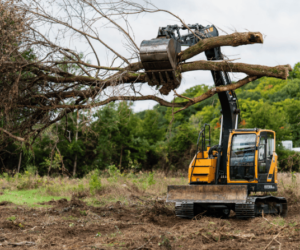Understanding Stainless Steel 310 Pipes: Composition, Properties, and Applications
Stainless steel has become a widely used material in various industries due to its strength, corrosion resistance, and versatility. Among the many types of stainless steel available, Stainless Steel 310 Pipes stand out due to their exceptional high-temperature resistance and durability. In this blog, we will delve into the composition, properties, and key applications of Stainless Steel 310 pipes, highlighting why they are a preferred choice in industries that demand materials with both strength and resistance to extreme conditions.
What is Stainless Steel 310?
Stainless Steel 310, often referred to as SS 310, is an austenitic stainless steel alloy that contains high levels of chromium and nickel. These elements contribute to its resistance to oxidation and corrosion at elevated temperatures. Stainless Steel 310 pipes are commonly used in applications where resistance to heat and corrosion is critical, especially in high-temperature environments.
The chemical composition of Stainless Steel 310 typically includes:
- Chromium (Cr): 24-26%
- Nickel (Ni): 19-22%
- Carbon (C): Up to 0.25%
- Manganese (Mn): 2.00%
- Silicon (Si): 1.00%
The high chromium and nickel content in SS 310 contributes to its excellent resistance to oxidation, making it suitable for use in extreme temperature conditions, such as furnaces, gas turbines, and other high-temperature systems.
Key Properties of Stainless Steel 310 Pipes
1. High-Temperature Resistance
One of the standout features of Stainless Steel 310 pipes is their ability to withstand high temperatures. The alloy’s high chromium and nickel content make it particularly resistant to scaling and oxidation, even at temperatures as high as 1100°C (2012°F) in intermittent service and 1000°C (1832°F) in continuous service. This makes Stainless Steel 310 pipes ideal for applications that involve exposure to heat, such as furnace components, heat exchangers, and industrial heating equipment.
2. Excellent Corrosion Resistance
Stainless Steel 310 offers superior corrosion resistance compared to other stainless steel grades. Its resistance to both corrosion and oxidation is one of the primary reasons it is used in harsh environments where exposure to corrosive gases and liquids is common. It is especially resistant to oxidation in sulfur-containing atmospheres and can withstand long-term exposure to high-temperature air and gases.
3. Good Mechanical Properties
Stainless Steel 310 pipes are known for their good mechanical properties, which include high tensile strength, excellent toughness, and formability. These pipes can handle significant mechanical stress and pressure, making them suitable for demanding applications where high strength and durability are required. Furthermore, they have a low coefficient of expansion, which is beneficial in high-temperature applications where dimensional stability is crucial.
4. Resistance to Sulfur Containing Environments
Another important property of Stainless Steel 310 is its ability to resist damage from sulfur-containing gases and chemicals, such as sulfur dioxide (SO2) and hydrogen sulfide (H2S). This makes it particularly useful in chemical processing and petrochemical industries, where sulfur compounds are commonly present in the environment.
5. Versatility and Fabricability
Stainless Steel 310 is highly versatile and can be fabricated into various shapes and sizes, including pipes, sheets, and plates. Its formability and ease of welding make it ideal for creating complex structures and components for a wide range of applications. Additionally, Stainless Steel 310 pipes are resistant to carburizing and nitriding environments, which makes them a preferred material for high-temperature processing equipment.
Common Applications of Stainless Steel 310 Pipes
Stainless Steel 310 pipes are widely used in various industries due to their combination of heat and corrosion resistance. Some of the most common applications include:
1. Furnaces and Heat Exchangers
One of the most common uses for Stainless Steel 310 pipes is in high-temperature applications, such as furnaces, heat exchangers, and boiler components. The alloy’s ability to resist oxidation and corrosion at high temperatures makes it ideal for use in these environments. Stainless Steel 310 pipes are often used for the construction of heat-resistant tubes and components in industrial heating systems.
2. Petrochemical and Chemical Industries
In the chemical and petrochemical industries, where exposure to high temperatures and corrosive environments is prevalent, Stainless Steel 310 pipes offer exceptional durability and longevity. The pipes are used in the manufacturing of equipment such as reactors, distillation columns, and other processing equipment. They also handle gases and liquids that contain sulfur and other corrosive substances.
3. Gas Turbine and Power Generation
Stainless Steel 310 is commonly used in gas turbines and power generation plants, particularly in parts exposed to high temperatures, such as combustion chambers and exhaust systems. The high-temperature strength and resistance to thermal oxidation make it an ideal material for components that need to withstand extreme conditions.
4. Food Processing Equipment
While not as commonly used as other types of stainless steel, Stainless Steel 310 pipes are also employed in the food processing industry, especially in applications that involve high-temperature food sterilization processes. Its corrosion resistance and ability to withstand extreme temperatures make it suitable for certain food processing and preservation equipment.
5. Aerospace and Aviation
The aerospace industry requires materials that are lightweight, durable, and able to withstand extreme temperatures. Stainless Steel 310 pipes are used in parts of aircraft and aerospace components that are exposed to high temperatures, such as turbine engines and exhaust systems. Its high heat resistance and mechanical strength make it an ideal material for these applications.
Advantages of Choosing Stainless Steel 310 Pipes
- Long-term Durability: The pipes offer superior resistance to heat, oxidation, and corrosion, ensuring long-lasting performance even in the harshest environments.
- High Performance: Stainless Steel 310 pipes can handle high pressures and temperatures, making them ideal for industrial applications.
- Cost-Effective: Though initially more expensive than other materials, Stainless Steel 310’s resistance to wear and tear means it requires fewer replacements and repairs, offering cost savings in the long term.
- Low Maintenance: Due to their corrosion and oxidation resistance, Stainless Steel 310 pipes require less maintenance, which is beneficial in industries that require reliable, long-term performance.
Conclusion
Stainless Steel 310 pipes are an essential material in industries that require materials with high-temperature resistance, excellent mechanical properties, and resistance to corrosion and oxidation. From heat exchangers to petrochemical processing, Stainless Steel 310 Pipe provides a reliable solution for a wide range of applications. Choosing Stainless Steel 310 pipes ensures long-lasting performance, durability, and cost-effectiveness in environments where other materials may fail. Whether you’re designing a high-temperature furnace or developing industrial machinery, Stainless Steel 310 pipes are a smart choice for superior results.














Post Comment